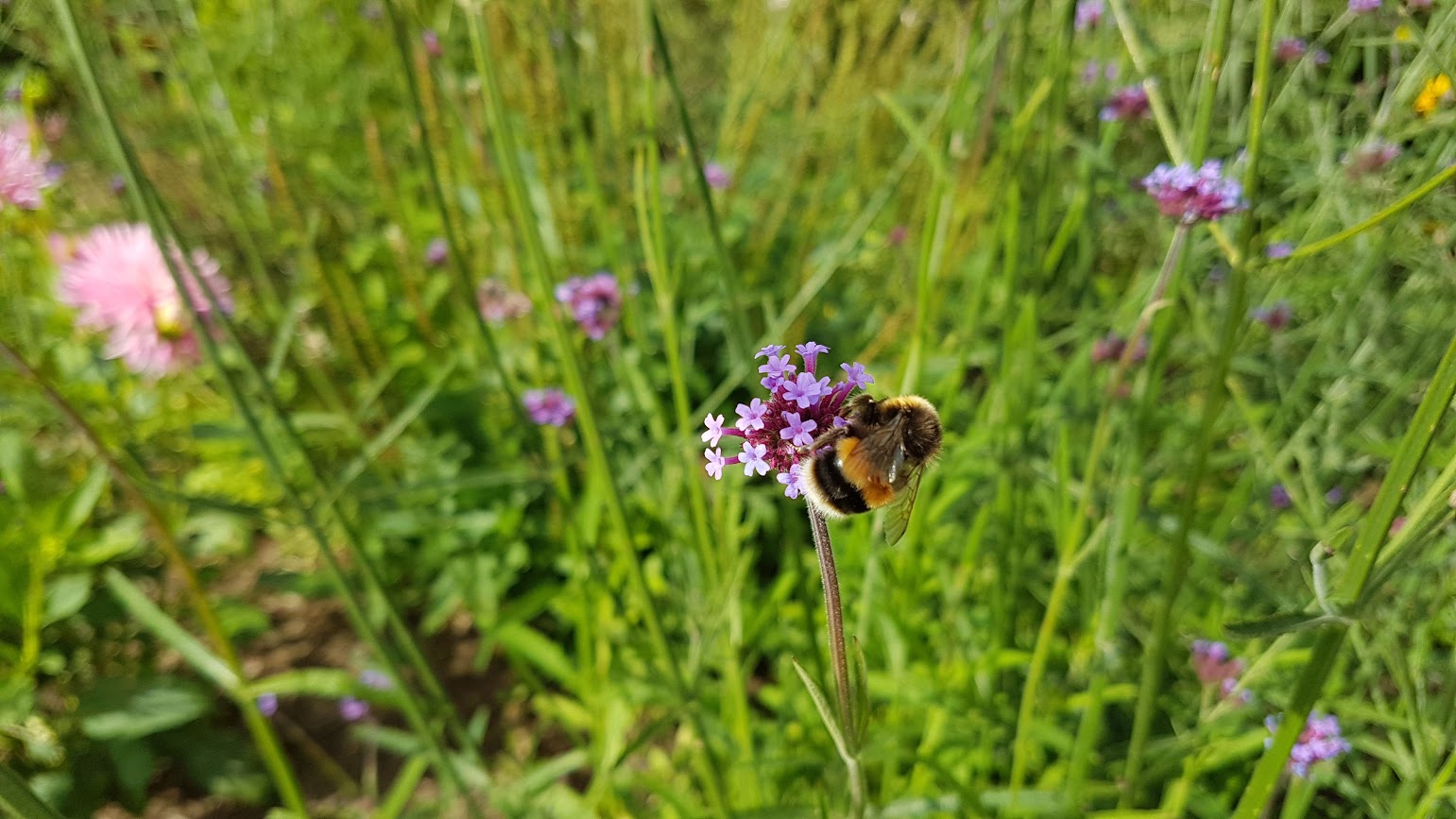Science
New Study Reveals Nutritional Needs of Bumble Bees for Conservation

A comprehensive study has shed light on the nutritional requirements of bumble bees, highlighting the need for targeted conservation strategies. Researchers from Northwestern University and the Chicago Botanic Garden tracked eight species of bumble bees over an eight-year period to understand their foraging behaviors and dietary preferences. The findings emphasize the importance of creating pollinator gardens that cater to the distinct nutritional needs of these vital insects.
The research revealed that bumble bees fall into two distinct dietary groups: one group prefers protein-rich pollen, while the other favors carbohydrates and fats. This differentiation is crucial in light of the declining global bee populations, which pose significant risks to pollination and, consequently, the broader food chain.
According to an analysis by Digital Journal, the decline in bee populations can be attributed to several factors, including habitat loss from intensive farming, pesticide use, urban development, and climate change. Each of these elements contributes equally to the challenges faced by pollinators.
Understanding Bumble Bee Diets
The study focused on the consumption of pollen, revealing that coexisting bumble bee species occupy specific nutritional niches. Larger, long-tongued bees tended to prefer pollen high in protein, while those with shorter tongues collected pollen richer in sugars and fats. Moreover, individual bees adjusted their diets in alignment with the growth and development of their colonies, reflecting changing nutritional needs throughout the season.
Worker bees play a crucial role in the lifecycle of their colonies by gathering pollen from various flowers. They transport this pollen back to their nests in specialized “baskets” on their hind legs, ensuring that their larvae receive the necessary nutrients for growth.
To develop their findings, researchers meticulously tracked the flowers visited by each bee species, collecting pollen samples from 35 different plant species. Laboratory analysis enabled them to measure the macronutrient content of these samples, focusing on protein, fat, and carbohydrate concentrations. This extensive dataset provided a clearer picture of how different bee species divide nutritional resources.
The results indicated significant variations in pollen nutrient content among plant species, with notable differences throughout the seasons. For instance, spring flowers were found to contain more protein-rich pollen, while late-summer blooms tended to be higher in fats and carbohydrates. This seasonal shift aligns closely with the nutritional preferences of the bee species studied.
Implications for Bee Conservation
The researchers identified a clear pattern: long-tongued bee species gravitated towards pollen with higher protein and lower fat content, while shorter-tongued species favored the opposite. The differences observed in dietary preferences appear to correlate with tongue length, which influences the types of flowers accessible to each species.
As global populations of pollinators face increasing threats from habitat loss, climate change, and inadequate nutrition, these findings underscore the necessity for conservation efforts that prioritize nutritional diversity alongside floral diversity. By offering a variety of plants that meet the specific dietary needs of different wild bumble bee species, conservationists can better support these crucial pollinators.
The full research is published in the journal Proceedings of the Royal Society B, under the title “Nutrient Niche Dynamics Among Wild Pollinators.” The work of the researchers, led by Dr. Tim Sandle, has important implications for how society approaches bee conservation efforts moving forward.
By understanding and addressing the nutritional needs of bumble bees, conservationists can help ensure the survival of these essential insects, which play a vital role in maintaining ecological balance and supporting global food production.
-

 Science3 months ago
Science3 months agoToyoake City Proposes Daily Two-Hour Smartphone Use Limit
-

 Top Stories3 months ago
Top Stories3 months agoPedestrian Fatally Injured in Esquimalt Collision on August 14
-

 Health3 months ago
Health3 months agoB.C. Review Reveals Urgent Need for Rare-Disease Drug Reforms
-

 Technology3 months ago
Technology3 months agoDark Adventure Game “Bye Sweet Carole” Set for October Release
-

 World3 months ago
World3 months agoJimmy Lai’s Defense Challenges Charges Under National Security Law
-

 Lifestyle3 months ago
Lifestyle3 months agoVictoria’s Pop-Up Shop Shines Light on B.C.’s Wolf Cull
-

 Technology3 months ago
Technology3 months agoKonami Revives Iconic Metal Gear Solid Delta Ahead of Release
-

 Technology3 months ago
Technology3 months agoApple Expands Self-Service Repair Program to Canada
-

 Technology3 months ago
Technology3 months agoSnapmaker U1 Color 3D Printer Redefines Speed and Sustainability
-

 Technology3 months ago
Technology3 months agoAION Folding Knife: Redefining EDC Design with Premium Materials
-

 Business3 months ago
Business3 months agoGordon Murray Automotive Unveils S1 LM and Le Mans GTR at Monterey
-

 Technology3 months ago
Technology3 months agoSolve Today’s Wordle Challenge: Hints and Answer for August 19









